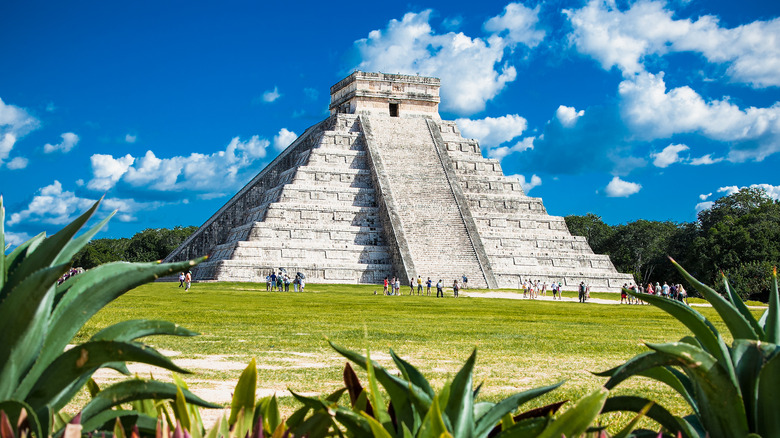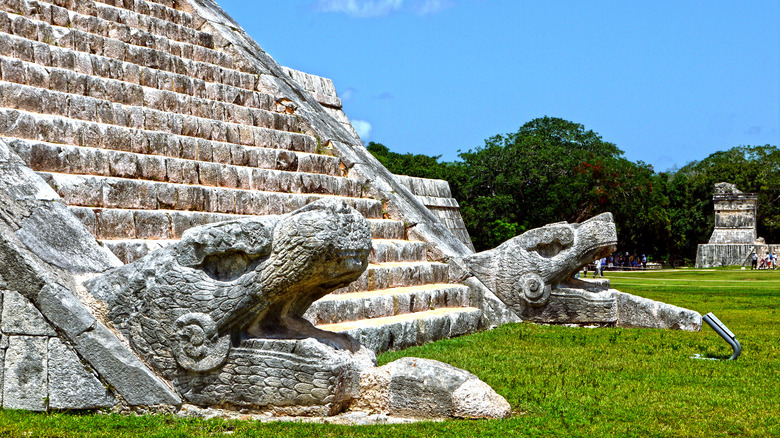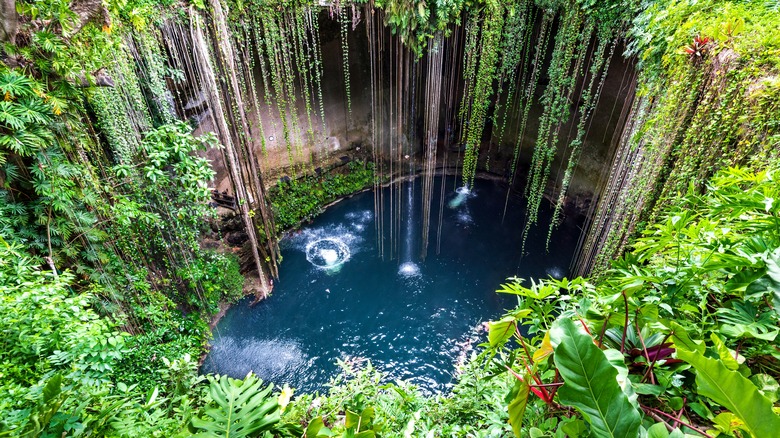This Archaeological Site Is A Must-Visit For History-Buffs Traveling To Mexico
Vibrant, enchanting, and incredibly diverse, Mexico shines for its cultural depth. Beyond being home to some of the world's top-ranked cities and brimming with underrated tourist destinations, the country's ancient history continues to resonate centuries later. With stories and legends that have long been associated with the Mayan civilization — an ancient society that once thrived as the region's leaders in trade, culture, and innovation — it's not surprising to see why. Renowned for their advancements in fields such as astronomy, mathematics, and architecture, the Mayans didn't just build cities or create monuments — they laid the foundation for a sophisticated understanding of the world and the cosmos.
If you're looking to truly immerse yourself in the heart and soul of Mayan history, a visit to the ancient city of Chichén Itzá might be just what you need. Nestled in the state of Yucatan, this archaeological treasure offers a glimpse into the grandeur of the ancient Mayan way of life.
One of the new Seven Wonders of the World and a UNESCO World Heritage site, Chichén Itzá has quickly emerged as one of the most popular attractions in the area — and in Mexico itself. Drawing in more than 2.5 million visitors each year, it's clear that the allure of the ancient Mayans continues to intrigue and captivate travelers from around the world. Whether you're a history buff or just a curious traveler, a trip to Chichén Itzá promises to take you back in time.
Must-see spots in Chichén Itzá
El Castillo — or the Temple of Kukulkan — is, undoubtedly, the crown jewel of Chichén Itzá. One of the oldest temples in the world standing at 78 feet tall and 182 feet wide, the pyramid serves as a symbol of the Mayans' understanding of astronomy and time. Each of the pyramid's four sides has a staircase made up of 91 steps with a final step at the top that add up to 365 — each for one day of the year.
One of the best times to visit the temple is during the spring and autumn equinox. As the sun's rays align with the equator, a shadow is cast directly on the steps of the northern side of the pyramid. This creates the illusion of the serpent deity — Quetzalcóatl — as if it were descending the steps.
Although El Castillo usually captures most of the attention, Chichén Itzá is brimming with other architectural wonders. First, there's the eerie Platform of the Skulls — the Tzompantli — which is decorated with intricate carvings of skulls and would have held the remains of Mayan enemies or sacrificial offerings. Then, there's the Main Ball Court, where Mayans would have played a traditional "Ball Game." It consisted of two opposing teams trying to score a ball through rings on a wall using only their hips. Not far off, the Temple of the Warriors, stands as a tribute to the Maya-Toltec military legacy, and that barely scratches the surface.
A journey to the past
If you're planning a trip to the Yucatan Peninsula, you'll be happy to hear that Chichén Itzá is easily accessible from Cancun — one of Mexico's most popular tourist destinations. The drive itself is about 125 miles long and should take roughly 2 hours along a straight, well-paved road. While there are various tours on offer that you'll see advertised all around Cancun, your best bet is to hire a car and drive there yourself before the tourist-packed coaches take over the site. Once you're there, a general admission ticket will set you back $614 MXN, or around $34 according to today's rate.
Once you're done exploring Chichén Itzá, having your own car means you can take a quick detour on the way back to the coast — specifically, to one of the Yucatan's famous cenotes, like the Cenote IK Kil or to Tsukán Santuario de Vida. Not only are these sinkholes filled with pristine blue waters a sight to see, but they're also a big part of the reason you're there in the first place. "Chi" which means mouth and "chen" which means wells — combined with "Itzá", the name of the people who settled there — actually indicate that the city was named after these natural pools that surrounded the area. Plus, let's be honest, cooling off in these underwater caves after a day of exploration will undoubtedly be the cherry on top of your Yucatan adventure.


